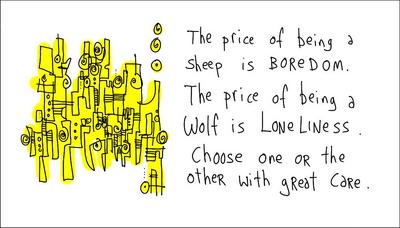Unveiling the Anatomy of Sales Success: How Muscle Memory Fuels Top Performers
In sales, success isn’t just about having the gift of the gab or a knack for persuasion—it’s about mastering sales skills to the point where they become second nature. Just as athletes rely on muscle memory to execute complex movements with precision and efficiency, top performers in sales cultivate their form of muscle memory to deliver exceptional results consistently.
In this article, we’ll explore the concept of sales muscle memory and delve into the top 17 sales skills that must become ingrained in every top sales performer’s repertoire.
Understanding Sales Muscle Memory
Muscle memory is a phenomenon observed in athletes who have trained extensively in a particular sport or activity. It refers to the ability of the muscles to perform a specific movement or action automatically without conscious effort. Through repetition and practice, athletes develop neural pathways that allow them to execute complex movements quickly, accurately, and consistently.
For example, for 13 years, I trained in martial arts and practiced at least three nights per week. I can’t begin to guess how many blocks, punches, and kicks I delivered over the years. I have not trained for over 15 years, but speaking at a trade association event recently, I demonstrated a side block as I discussed sales muscle memory, and it was perfect. My arms moved in a half-moon path in front of my body. My elbow was far from my ribs, and my fist was level with my shoulder. I had a strong grip, engaging all the muscles in my forearm. How did this happen without me even thinking about all the steps to making a side block work? A side block is one of the first things you learn, second only to a strong stance.
During this presentation, I shared how the best martial arts fighters do not have to think about movements in the ring with an opponent; muscle memory kicks in from instruction with practice, application exercises, and trying the new skills repeatedly in real-life situations.
In the context of sales, muscle memory operates similarly. Top performers hone their skills through continuous practice and refinement until they become ingrained habits. These skills become so deeply embedded that they can be deployed effortlessly in any sales situation, whether collaborating with a client and discussing solutions, handling objections, or closing a deal.
Top 17 Sales Skills That Must Become Muscle Memory
1. Pre-Call Plan
Top sales performers have a pre-call plan before each sales call. They do their research and know the people they wish to meet, their roles, and what is important to them. They understand what has been published about the company and its key objectives and struggles. They have a plan for the call. Is this call to build rapport and conduct discovery, qualify the opportunity, or advance the sale to close? Are we educating other buyer decision-making team members or negotiating prices and terms? The purpose of the meeting dictates how the salesperson prepares and what they bring to the meeting. With a little research, they can quickly determine who the decision-makers and influencers are and what each person needs. Without a sales plan for each call, your salespeople run the risk of random acts of sales. Sometimes, they engage, and most times, they do not. Sales managers are unhappy with revenue results, and customers and prospects have poor satisfaction from the sales call. Pre-call plans are something every sales leader has mastered to drive revenue and market share growth.
2. Active Listening
Effective communication begins with listening. Top performers actively listen to their clients, tuning in to their needs, concerns, and preferences. By practicing active listening, sales professionals can uncover valuable insights that enable them to tailor their approach and offer personalized solutions.
3. Building Rapport
Building rapport is essential for establishing trust and credibility with prospects. Through genuine conversation, empathy, and rapport-building techniques, top performers create a connection with their clients, laying the foundation for a fruitful business relationship. We want to develop business relationships, not friendships. Salespeople who need to be respected more than being liked are top performers. They ask great questions and are not afraid to ask for the order.
4. Product Knowledge
In-depth product knowledge is a cornerstone of successful selling. Top performers invest time and effort into mastering the features, benefits, and applications of their products or services, allowing them to articulate value propositions effectively and confidently address customer inquiries. Buyers today are hungry for applications and best practice advice not found in your brochures or website.
5. Handling Objections
Objections are a natural part of the sales process. Top performers anticipate objections and have prepared responses to address them effectively. We do not try to overcome objections but handle them professionally. Through practice and role-playing, sales professionals develop the ability to handle objections with poise and conviction, turning challenges into opportunities and revenue.
6. Closing Techniques
Closing is where the rubber meets the road in sales. Unfortunately, 67% of salespeople struggle with closing skills. They have either yet tyet to receive closing skills training or coaching, or they have a mindset that asking for the order is too pushy. Whatever we diagnose with the sales effectiveness assessment, we can improve sales closing skills. Top performers recognize buying signals and employ closing techniques to win the deal. Whether it’s the assumptive close, the trial close, or the alternative close, mastering these techniques allows sales professionals to ask for the sale and secure commitments from clients confidently.
7. Time Management
Time is a precious commodity in sales. Salespeople, on average,e spend less than 20% of their time selling. Top performers prioritize their tasks, set clear goals, and manage their time effectively to maximize productivity and focus on high-value activities. By implementing time-saving strategies and minimizing distractions, sales professionals optimize their workflow and achieve better results.
8. Adaptability
The sales landscape is constantly evolving, and top performers are adaptable in the face of change. Top performers are inquisitive and have a high figure-it-out factor. Whether it’s adjusting to new technologies, market trends, or customer preferences, sales professionals embrace change and adapt their strategies accordingly to stay ahead of the curve.
9. Emotional Intelligence and Situational Awareness
Emotional intelligence plays a crucial role in sales success. Top performers possess high self-awareness and empathy, allowing them to understand and connect with their clients more deeply. By recognizing and managing their own emotions and those of their clients, sales professionals build stronger relationships and drive better outcomes. They have mastered the art of staying in the moment and focusing their time and energy on the right behaviors.
10. Problem-Solving
Sales professionals encounter a myriad of challenges and obstacles in their day-to-day activities. Top performers approach these challenges with a problem-solving mindset, seeking creative solutions and thinking outside the box to overcome barriers and achieve their goals.
11. Networking
Networking is valuable for expanding one’s professional network and generating new business opportunities. Top performers proactively cultivate relationships with industry contacts, peers, and potential clients, leveraging their network to uncover leads, referrals, and partnerships. They build what we refer to as their relationship matrix in key accounts with five or more key decision-makers and not just the buyer who writes the order.
12. Negotiation Skills
Negotiation is an integral part of the sales process. Top performers are skilled negotiators who understand the art of compromise and value creation. By identifying mutual interests, exploring win-win solutions, and maintaining a collaborative approach, sales professionals negotiate favorable outcomes that benefit both parties. Over 75% of professional buyers have received formal negotiations skills training. Buyers practice their negotiation skills three to five times per day. Sadly, very few salespeople have received formal negotiation training, ultimately leaving money on the table when it comes time to close. Salespeople trained in negations take a consultative approach and often build a business chase not about price but the impact the purchase will make on the bottom-bottom, unfollowing a formal sales process and confirming value along the way. Negotiations should be an easy process and not something salespeople dread.
13. Follow-Up
Follow-up is key to maintaining momentum and nurturing relationships with prospects. Top performers follow up diligently after an initial meeting, a sales presentation, or a demo. By staying top of mind and providing timely follow-up, sales professionals demonstrate their commitment and professionalism, ultimately increasing their chances of closing the deal. Today, top performers follow up through various means, such as phone, email, text, LinkedIn messages, face-to-face meetings, and Zoom. In our follow-up training, we ask salespeople to ask their customers how they wish to be communicated with. With each follow-up, they provide more value to advance the sale to a close and provide an opportunity to serve their customers.
14. Resilience
Sales can be a rollercoaster ride of highs and lows. Top performers possess resilience in the face of rejection, setbacks, and challenges. Our course helps salespeople with low handling rejection scores, and we train them to be rejection-proof. They bounce back quickly from disappointments, learn from failures, and maintain a positive attitude, fueling their drive and determination to succeed.
15. Continuous Learning
The best sales professionals never stop learning and growing. They own their skills development. They attend conferences, read sales books, and participate in additional training their employers deliver outside work. Top performers invest in professional development, seeking training, resources, and mentorship opportunities to expand their knowledge and skill set. Often, we facilitate peer-to-peer learning with the most experienced veterans, sharing their best practices with the rest of the team. By staying abreast of industry trends and best practices, sales professionals position themselves for long-term success. Sales leaders and sales managers must have strong sales coaching skills to help their teams improve their skills.
16. Self-Reflection
Self-reflection is a critical component of personal and professional growth. Top performers regularly evaluate their performance, identify improvement areas, and set self-development goals. Working with sales managers and coaches, we debrief recent sales calls on areas where the call went well and on opportunities to improve future sales calls. By fostering a culture of continuous improvement and self-awareness, sales professionals strive to reach new heights of excellence in their craft.
17. Continuous Prospecting
Top sales performers prospect continuously, seeking opportunities to help their current customers and prospects. This requires strong prospecting skills and tools as well as a prospecting cadence. They are looking for unresolved problems and seek to solve them with their customers. This requires them to be inquisitive and have strong discovery and qualifying skills. They must clearly understand their ideal customer profile, the decision-making personas of the key people, what they value most, and how they measure success.
In the competitive sales world, mastering the art of sales muscle memory is essential for achieving sustained success and outperforming the competition. Our voice of customer research shows how you sell is much more important than what you sell today. Sales conversations must be authentic, demonstrate competence, and build trust. Buyers will quickly move on if they sound unprepared or have canned sales messages. Post pandemic buyers want business consultants masquerading as salespeople not transactional reps with commission breath.
Do your salespeople have the skills to have conversations that lead to revenue, or do they show up and throw up?
Do your salespeople have prospecting skills, or do you experience random acts of sales each month?
By honing the top 15 sales skills outlined in this article, sales professionals can develop the confidence, competence, and consistency needed to excel in their roles and drive exceptional results.
Through continuous practice ( yes, that means role-playing), refinement, refinement, and adaptation, top performers build a solid foundation of skills that become ingrained habits, enabling them to thrive in any sales environment and seize opportunities for growth and advancement.
Does your sales team have the skills and beliefs to become top-performing salespeople today?
What skills gaps are hurting your ability to drive explosive growth in revenue, market share, share of wallet, and gross profit margins?
How effective is your sales team today?
How much more effective could they be?
How would building muscle memory affect your bottom line and shareholder-holder value?
Let’s schedule a call and discuss how we can help build sales muscle memory for your sales team so that how you sell becomes a core competency of your sales team.















